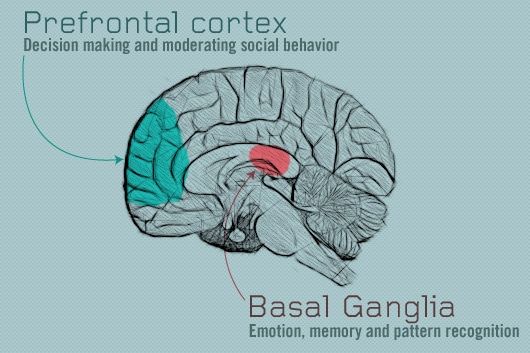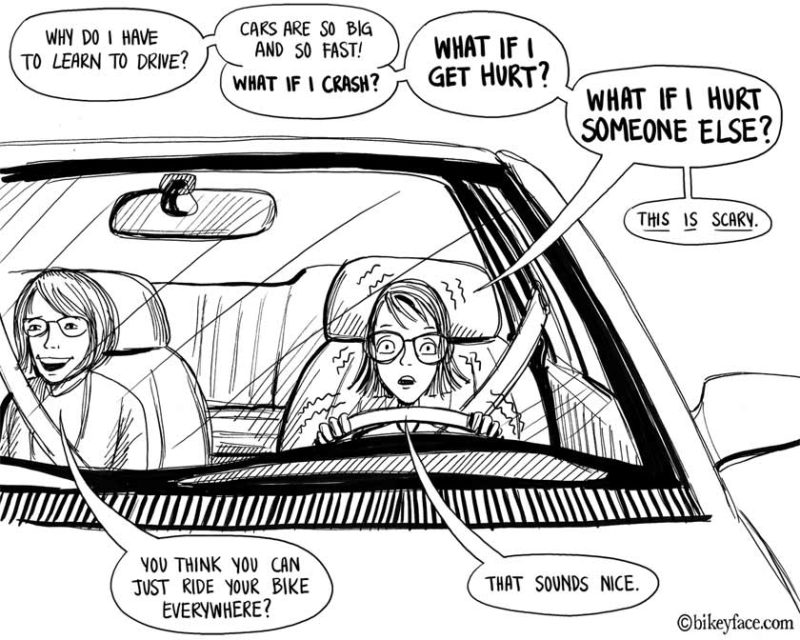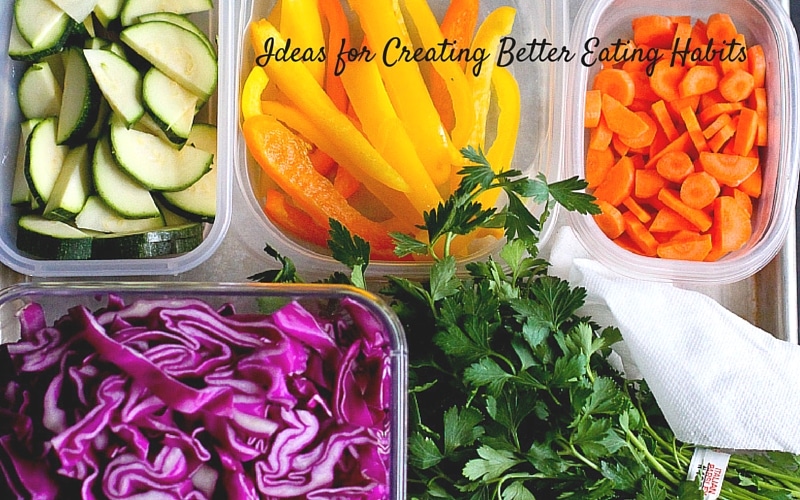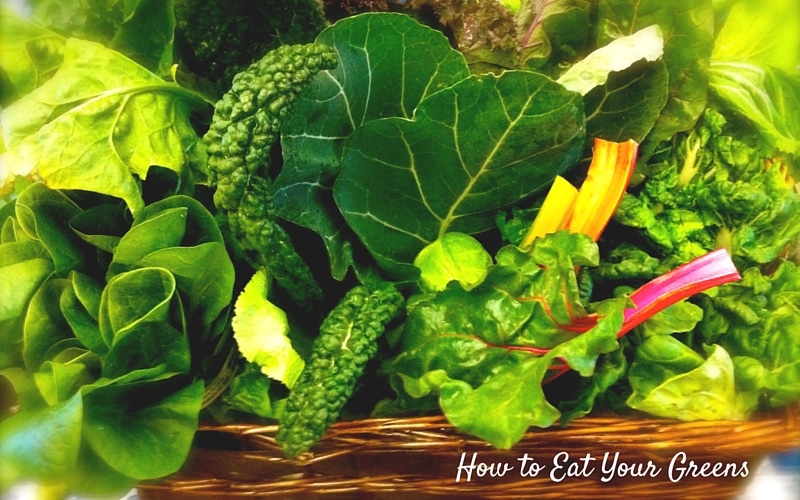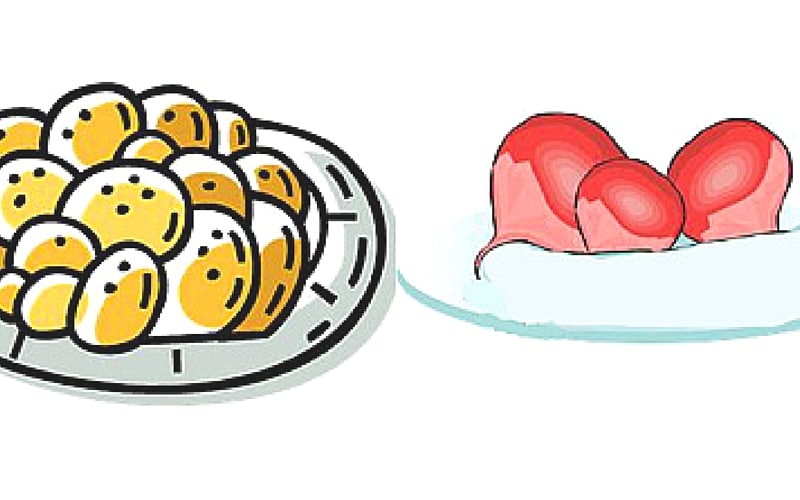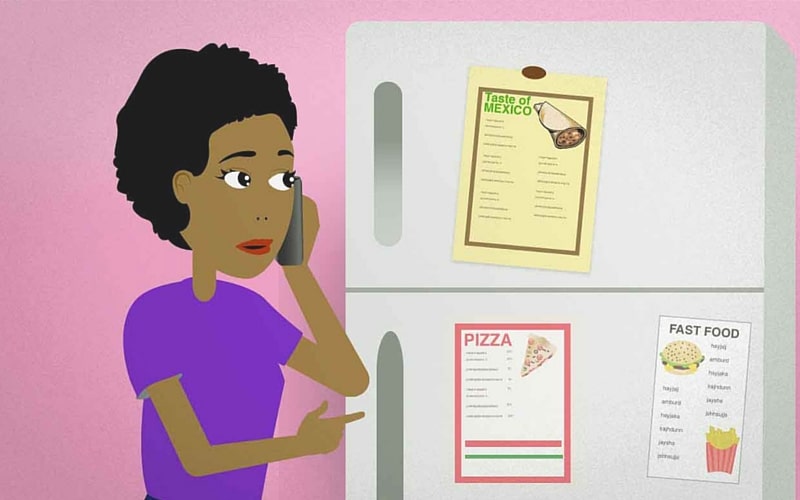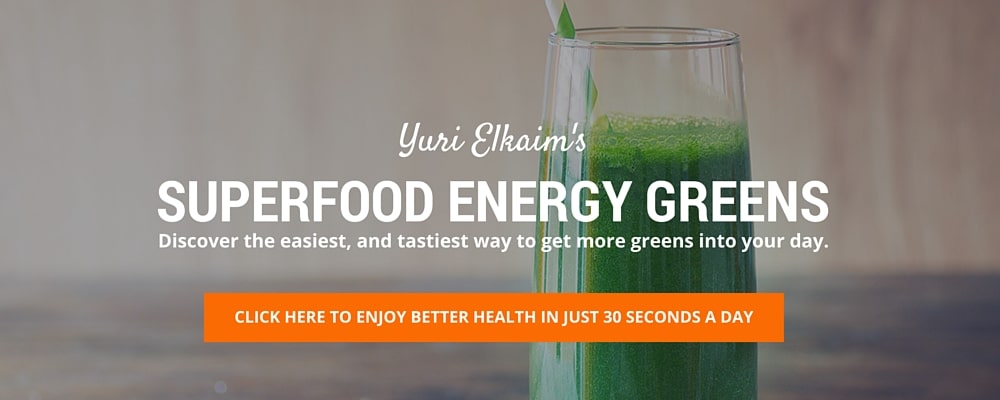Your life is a result of your habits.
In this article
- How Habits Are Formed
- Giving Life to Healthy Eating Habits with the CPR Method
- Using CPR to Create Healthier Eating Habits
- How to Make Your Healthy Eating Habit Stick
- How to Eat Your Greens
- More Helpful Tips to Eat Healthier
- 3 Common Myths About Habits (Start Ignoring These)
- The Interesting Relationship Between Stress, Blood Sugar, and Self-Control
- How to Eat Well Even When Your Willpower Is Shot
- Free Bonus Training
- In Closing
It’s the little things you do day in and day out that truly make the biggest difference in time.
And if, like so many other people I’ve helped over the years, you want to create healthy eating habits that actually stick, then I’m going to show you exactly how to do that in this post with the proven CPR Method… along with some of the biggest “habit myths” you should stop buying into.
But first, I want to share a few “success story” snippets from 3 of my female clients. Can you identify a common theme?
“…When I started the diet I was severely addicted to sugar and wheat but very quickly the cravings subsided. I felt I gained a control I had lacked for years over my diet. It felt more like a knot that was loosening giving me a more relaxed relationship with food. I can finally feel like I can hear my body telling me what it needs…”
Recommended reading:“What Yuri has provided me is control of my eating where I don’t have to crave so much, and I also don’t have to feel guilty if I don’t eat so much,” shares Ellen. “Being able to feel like I have control of my body is a wonderful change! I still have a few more pounds to go. I see this as a journey and look forward to learning more about what works best for me, my body and my lifestyle.”
“I wanted to eat better, but I just resorted to my comfort food after every disappointment or failed attempt to do better. Food — especially sweets (chocolate is my FAVORITE) — took me to my happy place. I knew I needed to change, but I honestly didn’t know how.”
Notice how CONTROL is a big focus for these women (and so many others)?
It’s ironic because when creating healthy eating habits is the goal, self-control is actually the last thing you want to be focusing on. I’ll show you why further down in this post, but let’s first understand how habits are formed in the first place.
How Habits Are Formed
Neuroscientists have traced our habit-making behaviors to a part of the brain called the basal ganglia, which also plays a key role in the development of emotions, memories and pattern recognition.
Decisions, meanwhile, take place in a different part of the brain called the prefrontal cortex.
Why is that important?
It’s important because the goal of habit creation is to move the process from the prefrontal cortex to your basal ganglia.
This is when a behavior truly becomes automatic – which is what we want. To look at this another way, there are 4 stages of competency…
The 4 Stages of Competency
Stage 1: Unconscious Incompetence
You don’t know even know what you’re not good at.
Stage 2: Conscious Incompetence
You’re aware that you’re not good at something.
Stage 3: Conscious Competence
You actively work to improve some behavior or skill. This is where you consciously work to improve. This requires heavy involvement of your prefrontal cortex.
Stage 4: Unconscious Competence
That behavior or skill has become automated (and instilled in your basal ganglia) and is no longer consciously controlled (by your prefrontal cortex).
Let’s look at the example of learning how to drive.
When you first learn to drive, you’re at Stage 1—you really have no idea what’s going. But as you take your first few driving lessons and notice (consciously) that you are not that great at parallel parking, for instance, you’re into Stage 2.
However, with more practice you then move into Stage 3 and become a better parker (and driver), although it still requires a lot of focus and conscious attention.
With time and practice you (hopefully) reach the epiphany – Stage 4 – and can now parallel park while talking with a passenger or singing along to the radio. It’s automatic.
Even though driving isn’t a habit, the process of creating healthy eating habits, or any other habit for that matter, follows a similar path.
The goal is to make behavior automatic so that the decision-making part of your brain can shut down, which is a real advantage because it means you then have more mental energy to devote to something else.
Remember, creating healthy habits (eating and otherwise) is all about moving a conscious behavior from your prefrontal cortex to your basal ganglia where it is solidified and turned into an automatic routine.
Let’s now look at how to do that.
Giving Life to Healthy Eating Habits with the CPR Method
Naturally, you don’t physically touch parts of your brain to move stuff around, but there is a 3-step process that does the work for you.
I call it the CPR Method and it’s the key to creating healthy eating habits that actually stick.
I didn’t invent this 3-step process, although I believe I’m the first to name it as such. Credit for this “habit loop” discovery goes to Charles Duhigg, the author of the Power of Habit.
In essence, all habits involve these 3 steps:
1. Cue (the trigger that initiates the behavior)
2. Practice or Performance (the behavior itself)
3. Reward (the benefit you get from doing the behavior)
Duhigg calls them cue, routine, reward. (I think mine’s a little more clever ☺)
Important Reminder: All behaviors reward you, even the not-so good ones. The way our brain is wired makes it very challenging to create new healthy habits if you go about things without understanding this CPR framework.
Smoking, using drugs, drinking, or eating sugar all have the same effect on the reward/pleasure center in our brain known as the nucleus accumbens, which releases dopamine in the anticipation of a specific behavior (good or bad).
As an example, here’s how the habit of eating sugar breaks down:
1. You get stressed (cue)
2. You reach for a piece of chocolate (practice or performance)
3. You instantly feel calmer (reward)
See how primitive and simple that is? Repeat this over and over again and you’ve got a full blown sugar/chocolate addiction (not a deficiency in magnesium as some chocolate enthusiast might proclaim).
[Read: Sugar Detox Plan: Powerful 7-Day Sugar Detox Blueprint]
If you’ve got kids or live a stressful life (don’t we all?), you can start to see how certain habits like grabbing a piece of chocolate or reaching for a glass of wine can easily spiral out of control.
We all want to feel good. When we feel stressed, anxious, upset, etc… we’ll do anything to return to our happy place.
I’ll discuss how to break bad habits in a future post but for now simply understand that attaching a positive reward to any behavior you want to turn into a lasting habit is very important.
Using CPR to Create Healthier Eating Habits
Now that you know the 3 steps for creating a habit, here’s how to structure the steps to create better eating habits that actually stick.
Step 1: Pick a Cue
As I’ll show you in a moment, creating better eating habits has nothing to do with self-control or willpower. It’s all about setting up your environment to support you.
This is why the cue is such a critical part of forming new habits. A good cue does not rely on motivation and it doesn’t require you to remember to do your new habit.
It simply makes it easy to start by piggy-backing your new behavior onto something that you already do.
Action step: Pick a cue by making a list of simple things you already do throughout the day. For instance, going to the bathroom, washing your face, tying your shoes, opening the fridge, etc…
These are all everyday occurrences that require no thought and provide ideal “shuttles” on which to tie-in your desired behaviors.
Let me illustrate this with something everyone loves talking about – using the toilet. ☺
Flushing the toilet AFTER an initial behavior of “doing your business” makes more sense than thinking that flushing the toilet first will prompt you to go to the bathroom.
In the same way, you want to pair your new desired behavior with a prior “cue”.
This is a consistent finding in the literature.
One study found those who flossed AFTER brushing (rather than before) tended to form stronger flossing habits and, at their 8-month follow-up, had stronger habits and flossed more frequently. (1)
In the toilet example above, going #1 or #2 would be the “cue” and flushing would be the “practice or performance”. The “reward” is knowing that the smell of putrid waste won’t permeate your entire house. A fun lesson to try to teach 3 young boys.
3 Ideas for Setting Up a Simple Cue for Mounting Better Eating Habits
Idea #1: Have a bowl of cut up veggies (like bell peppers or cucumbers) easily accessible inside your fridge so that each time you open your fridge (the cue), you can quickly grab a healthy (and tiny) snack (the practice/performance).
Idea #2: Before going to bed, fill up a large glass of water and leave on the counter in your kitchen. Then, first thing in the morning, when you enter your kitchen (the cue), you drink your ready-made glass of water (practice/performance).
To take things to the next level, refill your glass each time you drink it. Then, whenever you re-enter your kitchen use that as your cue to drink a glass of water.
Idea #3: This 3rd idea requires my Energy Greens (or any other greens powder). Instead of relying on coffee or sugar when you experience that mid-afternoon slump, let that “slump in energy” be your cue to add one tablespoon of your Energy Greens into a glass of water and drink it (practice/performance).
Thus, whenever you feel tired you condition yourself to reach for a healthier green elixir that takes 30 seconds to put together instead of relying on the short-lived reward (with long term negative consequences) of caffeine or sugar.
[Watch: The Shocking Truth About Caffeine]
Step 2: Choose a Behavior That Is Almost Too Simple
How do you eat an elephant? One bite at a time. (I don’t know who’s eating elephants these days – hopefully no one).
The same thing applies to instilling healthy eating habits. Keep it super simple.
Acclaimed Stanford professor on human behavior, BJ Fogg, recommends taking baby steps when thinking about your desired behaviors. He even advises creating “tiny habits” like brushing just ONE tooth at a time and building from there.
This has been shown to be much more effective at creating lasting habits than creating monster resolutions like “I’m giving up gluten, dairy, and sugar all at the same time!”
Start small and build from there.
Action step: Decide what you want your new habit to be. Then, ask yourself, “How can I make this new behavior so easy to do that I can’t say no?”
Step 3: Choose Your Reward(s)
I’m guilty of not celebrating my little and big victories as much as I should. However, it’s an important practice I’m committed to doing every night before bed in my gratitude/success journal.
Similarly, whenever you DO your desired behavior, you need to celebrate it. This closes the feedback loop that tells your brain “That behavior made me feel good. Let’s do more of it.”
In each of the examples from Step 1 above, the reward could be recognizing you made a healthy food choice, which you can anchor with a fist pump and a mental or verbal “YES!”
Self-acknowledgment is a huge step in building your confidence and feeling better about yourself.
And as I often say, “Great results come from feeling great.”
Plus, over time, you’ll feel more energized, your clothes will fit better, and your health will improve which all serve as on-going rewards to keep you on track.
Choose whatever reward you want (other than the very foods you’re trying to move away from), but make sure it’s meaningful to you.
How to Make Your Healthy Eating Habit Stick
With a new behavior under way, here are 3 simple action steps to make sure it actually sticks:
Stick Strategy #1: Start with a super small and easy-to-do behavior (as discussed above)
Stick Strategy #2: Increase your desired behavior each day, but in an incredibly small way.
Stick Strategy #3: Even after increasing your habit, keep repetitions super easy and chunked into easier pieces if needed.
How to Eat Your Greens
Many people don’t like eating green vegetables. And that’s certainly to be expected if you’re used to eating processed food loaded with sugar, MSG, salt, and other unhealthy ingredients that trick your palette and light up your brain’s reward center.
But here’s how to make eating your greens an enjoyable and lasting habit using the 3 stick strategies from above:
How to Eat Your Greens – Step 1:
On day 1, take just ONE small bite of a green leafy vegetable. That’s it. No harm done. Don’t even make a salad. Just pull a piece of lettuce or kale (or other leafy green) out of the fridge and take a little bite.
How to Eat Your Greens – Step 2:
On day 2, do the same thing but take TWO small bites of the green vegetable. No mas.
How to Eat Your Greens – Step 3:
Continue on this path until eating green vegetables becomes enjoyable and thoughtless. By this point, you’ll probably be ready to actually make a salad and love every mouthful.
[Try: Asian Quinoa Mason Jar Salad]
More Helpful Tips to Eat Healthier
Here are a few more ideas on how you can apply these 3 stick strategies to eat healthier on a consistent basis:
Drinking More Water:
- Take one small sip of water each time you enter your kitchen.
- On day 2, take 2 sips of water each time you enter your kitchen.
- Keep adding more sips until you easily down a glass of water and actually look forward to it.
Getting 8-10 Servings of Veggies and Fruit Each Day:
First, cut up your favorite produce into bite-sized pieces and keep them super easy to access in the fridge.
- On day 1, each time you open the fridge, take just one piece.
- On day 2, each time you open the fridge, take 2 pieces.
- Continue in this fashion and you’ll be eating more veggies than a giraffe in no time.
Note: If you want to stop reading at this point, you now have enough knowledge and actionable steps to not only form healthy eating habits, but also make sure they stick.
Now let’s go deeper and uncover the 3 BIG myths about habits that really aren’t helping you…
3 Common Myths About Habits (Start Ignoring These)
MYTH #1: It Takes 21 Days to Create a Habit
Sorry, not true. A lot of research has been done in this area and the reality is that some habits take much longer to develop than others.
Dr. Phillipa Lally, a leading researcher in this area, found that it takes an average of 66 days for a behavior to become automatic and that the length that these behaviors stick is between 18 to 254 days and varies on type of habit. (2)
For instance, simple behaviors (with less pain attached to them) like drinking water after lunch took only 56 days to stick, while doing sit-ups every morning took 91 days in Dr. Lally’s research.
That length of time may sound slightly depressing, but just remember to keep these pointers in mind (as well as what we’ve already discussed):
- Take small steps. Don’t try to do everything at once.
- Only try to change one habit at a time.
- Write down the habit you want to change, and write down specific plans for achieving that goal.
- Repeat the behavior you’re aiming for as often as you can. The more a behavior is repeated, the more likely it is that it will become “instinctive.”
[Read: How to Do More Push-Ups (Plus a Free Training Plan)]
This final tip leads to the next common myth:
MYTH #2: If You Miss a Day You Might as Well Start All Over
Research has shown that missing your habit once, no matter when it occurs, has no measurable impact on your long-term progress. Just get back on the horse and keep going. That’s why I continue to remind you that progress, not perfection, is the goal.
So please abandon the all-or-none mentality.
One really powerful technique I’ve used over the years to stay on track in many areas of my life is what I call “negative visualization”.
You’ve likely heard you should only focus on what you want because that’s what you’ll attract into your life. And while I agree with that, I also believe that foreseeing pitfalls and being prepared for them is just plain smart.
Negative visualization basically means having a plan B and/or plan C just in case plan A doesn’t work out.
The beauty of this is you mentally know how you would respond in advance so there’s no panic if the pitfall does occur.
As a private pilot and lover of aviation, I can tell you that pilots relentlessly practice and prepare for worst case scenarios. And thank god they do. Can you imagine if there was an inflight electrical fire and the pilots had to scramble – at that point – to figure out a solution?
If you apply the same thinking to your daily life, you can forecast potential obstacles and better prepare for them.
For example:
- You’ve got a company dinner next week? What challenges might arise that could derail you from your healthy eating path? Figure out a solution now.
- You’ll be traveling this weekend? So what will you do for food? Figure that out now.
- You’re doing great and on the healthy eating path, but all of a sudden you get some upsetting news that stresses you out. Will you turn to the chocolate and other de-stressing treats? Figure out a better alternative now.
You shouldn’t expect to fail, but you should plan for failure.
And even if you do fall off track, get right back on the next day. As you’ve undoubtedly experienced, good habits are a lot easier to form when you’re riding the wave of momentum. Don’t let the momentum swing back in the wrong direction.
MYTH #3: Creating New Habits Requires a Lot of Discipline and Willpower
This is probably my favorite. The idea that willpower, self-control, and discipline are required to eat well is simply not true.
It’s the same reason why done-for-you meal plans and recipes are so important to have at your fingertips…
They take the thinking out of food prep, especially after a long day when you’re tired and low on willpower.
Willpower is very much like a muscle that gets fatigued with constant use.
One of the most famous studies on this topic, published in the Journal of Personality and Social Psychology back in 1998, examined the effect of a tempting food challenge designed to deplete participants’ willpower through the awful power of an unfulfilled promise of chocolate!
In the first part of the trial, the researchers kept the participants in a room that smelled of freshly baked chocolate cookies. Then they teased them by showing them the actual treats alongside other chocolate-flavored confections.
While some test subjects got to indulge their sweet tooth, those whose willpower was being tested in the experimental condition were asked to eat radishes instead. How cruel. ☹
After the initial food bait-and-switch, the participants were then asked to complete a puzzle, which really tested their persistence (or willpower resolve).
The effect of the food manipulation was undeniable. Those who ate radishes made far fewer attempts at the puzzle and gave up more than TWICE as fast compared to the chocolate-eating participants.
In other words, those who had to resist the sweets and force themselves to eat the radishes could no longer find the will to fully engage in another torturous task. They were already too tired. (3)
The key finding from this seemingly silly study was a breakthrough: self-control and willpower are fleeting strengths that are used up across different sorts of tasks (ie. decision making, resisting temptations, heavy mental work, etc…)…
And they are depleted like a smartphone battery after constant use.
The pivotal study prompted 1,282 future studies involving everything from consumer to criminal behavior.
For instance, another famous study on court hearings found that at the beginning of the day, a judge was likely to give a favorable ruling about 65 percent of the time. However, as the morning wore on and the judge became drained from making more and more decisions, the likelihood of a criminal getting a favorable ruling steadily dropped to ZERO!
After taking a lunch break, however, the judge returned to the courtroom refreshed and the likelihood of a favorable ruling immediately jumped back up to 65 percent. And then, as the hours moved on, the percentage of favorable rulings would fall back down to zero by the end of the day. (4)
(Take home message: fight those parking or speeding tickets early in the day or just after lunch.)
The Interesting Relationship Between Stress, Blood Sugar, and Self-Control
Another important finding from the radish and chocolate study is that willpower seems tied to our blood glucose, suggesting that willpower can be negatively affected during times of low blood sugar.
This is why self-control can deteriorate during premenstrual syndrome (ladies, think chocolate cravings) and during periods of low food intake, especially if you suffer from hypoglycemia. That’s why people may become cranky and irritable when they have low blood sugar and are hungry. Something many call “hangry”.
Another article published in the journal, Personality and Social Psychology Review, suggests blood glucose is one important part of the energy source for better self-control…
And that the more we use our self-control and willpower, the quicker we deplete large amounts of glucose. (5)
Perhaps you’ve had days when you’ve gotten home from work exhausted. Not necessarily physically, but mentally. And that was likely due to all the decisions, restraint, and mental work you likely did during the day.
And with little willpower at night, it usually means “finger cooking” (aka. dialing for take-out or delivery) is the preferred choice. After all, it’s so much easier to order take-out than to spend even 15 minutes preparing a meal.
That’s why you have to set up your environment to win.
How to Eat Well Even When Your Willpower Is Shot
So you know you can’t rely on sheer determination or willpower to eat well consistently. And we know that dinnertime is the weak point for most of us where even the best of intentions can quickly go downhill.
Thus, the key to healthy eating habits – aside from the habit strategies we’ve discussed above – is to set up your environment to support you in your weakest moments.
Here are a few ways to do that:
- Make sure your kitchen is squeaky clean (instead of cluttered) so you can think a little more clearly in moments of weakness. After all, a cluttered surrounding leads to a cluttered mind, which gravitates to “escape” or seeking a quick fix meal/treat.
- Follow a meal plan so you know exactly what you’re having for your next meal – ahead of time. Don’t wait until you’re hangry to decide what to eat – that’s a recipe for disaster. Have a plan that lays out everything so there’s no thinking required.
- Have all of the necessary ingredients on hand and easily accessible. If you have to go to store at the last minute, your chances of making a healthy choice drop even further. Remember, make good behavior very easy to do, which means having the right foods at your fingertips.
- Throw out the junk. We all know it’s easier to reach into a bag of potato chips then it is to make a healthy meal, even if it takes just a few minutes. Your goal should be to make healthy choices very accessible and unhealthy choices extremely inaccessible. The easiest way is to simply throw out the junk food all together.
- Try rinsing your mouth with a sweetened beverage. Yes, sounds weird but check this out:
New research published in the journal Psychological Science showed that participants who simply rinsed their mouth with sugar-sweetened lemonade had better self-control on a laboratory test than those who gargled with Splenda-sweetened lemonade.
It seems as though the glucose in a drink may trigger taste buds on the tongue, which then signal the motivation centers of the brain—basically telling the body to pay attention. This reaction, in turn, helps you turn off whatever automatic impulses you might be facing. (6)
Free Bonus Training
During my Fat Loss Summit, I interviewed 24 fat loss experts to give you proven (both scientifically and in the real world) strategies to burn fat 24/7.
One of my favorite talks, which dealt specifically with creating change and building better habits, was with Krista Scott-Dixon from Precision Nutrition.
The video interview I posted above was only available to customers of the Fat Loss Summit, but I’ve decided to provide it for you in its entirety here. I think you’ll find it really helpful (and in line with what we’ve just discussed).
In Closing
Habits are vital to every aspect of your life. Take some time to re-read this guide on creating healthy eating habits and take action on the simple steps outlined throughout.
I hope you take away that even big changes should begin with super small micro-commitments. Make a mountain a molehill and you’ll be much more likely to create healthy eating habits that last for good.

